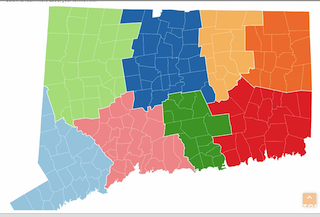
UniteCT Provides Assistance To Qualified Households Financially Impacted by the COVID-19 Pandemic
Governor Ned Lamont has announced that more than 1,000 tenants and landlords in Connecticut have benefitted from UniteCT – the state’s emergency rental and utility assistance program for households that have been financially impacted by the COVID-19 pandemic – since its launch in March. In the last week alone, the Connecticut Department of Housing, which administers the program, approved more than 250 of those payments.
UniteCT provides qualified households with up to $10,000 in past-due and prospective rent payments, as well as up to $1,500 in payments for past-due electric bills. Payments are typically made by the state directly to landlords and utility companies on behalf of tenants.
The program is funded by Connecticut’s $457 million share of the $47 billion that Congress appropriated for emergency rental and utility assistance in the Coronavirus Response and Relief Supplemental Appropriations Act and the American Rescue Plan Act. The American Rescue Plan Act also provides $10 billion for homeowner assistance, $5 billion for emergency housing vouchers, $5 billion for homelessness assistance, and $5 billion to assist low-income households with home energy and water costs.
“Thanks to UniteCT, more than a thousand Connecticut residents and counting are getting back on their feet without worrying about the roof over their heads, and landlords are receiving payments on their behalf,” Governor Lamont said. “I’m confident that UniteCT will help more households each week going forward, and I applaud our Congressional delegation and the Biden-Harris administration for continuing to work with our state to help families recover from the financial impact of the pandemic.”
Consistent with new guidelines released by the federal government last month, the Connecticut Department of Housing recently streamlined income documentation requirements for the program. To take further advantage of the flexibility provided by those guidelines, and in light of the second round of funding available in the American Rescue Plan Act, UniteCT will now:
- Cover arrears accrued since the national emergency was declared on March 13, 2020, rather than only those accrued in the last six months;
- Reimburse landlords for 100% of covered arrears, rather than only 85%;
- Cover three full months of prospective rent, rather than requiring certain tenants to contribute a portion of their income;
- Protect tenants by preventing evictions for nonpayment of rent during the months covered by the prospective rent payments;
- Rely where possible, on information about an applicant’s enrollment in other state programs or about median household income in an applicant’s neighborhood to further streamline the application process; and
- Continue to consider waiving the $10,000 limit on rent assistance, on a case-by-case basis, for households with extenuating circumstances.
Tenants and landlords who have already received assistance will also benefit from these changes. The Connecticut Department of Housing will contact those tenants and landlords with further instructions.